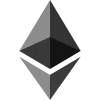
Polkadot DOT
General Information
Polkadot DOT is present on the following networks: Astar, Polkadot.
Astar uses a hybrid consensus mechanism that combines Proof of Stake (PoS) and Delegated Proof of Stake (DPoS), with the added feature of Sharded Multichain capabilities. The primary goal is to provide a scalable, interoperable, and decentralized platform for building decentralized applications (dApps), which can run on multiple blockchains in parallel. Key Features of Astar's Consensus Mechanism: 1. Proof of Stake (PoS): In Astar, validators participate by staking ASTR tokens, the native currency of the network. The more tokens staked, the higher the chances of being selected as a validator. Validators are responsible for validating transactions and securing the network. Validators receive block rewards for their efforts, which are paid in ASTR tokens. 2. Delegated Proof of Stake (DPoS): Astar incorporates DPoS to allow ASTR token holders to vote for validators. Token holders delegate their voting power to trusted validators, who then produce blocks and validate transactions. This ensures greater decentralization by allowing the community to have a direct say in who validates the network. Delegators receive a share of the block rewards earned by their selected validators. 3. Sharded Multichain: Astar’s consensus mechanism allows for multichain execution via Parachains in the Polkadot ecosystem, enabling Astar to process multiple parallel chains and increase scalability. This sharding mechanism ensures that Astar can scale effectively, maintaining high throughput while decentralizing the network. 4. Finality: Astar leverages Polkadot's GRANDPA (GHOST-based Recursive Ancestor Deriving Prefix Agreement) finality gadget for fast and deterministic finality. Once a block is finalized, it is irreversible, ensuring the integrity and security of transactions.
Polkadot, a heterogeneous multi-chain framework designed to enable different blockchains to interoperate, uses a sophisticated consensus mechanism known as Nominated Proof-of-Stake (NPoS). This mechanism combines elements of Proof-of-Stake (PoS) and a layered consensus model involving multiple roles and stages. Core Components 1. Validators: Validators are responsible for producing new blocks and finalizing the relay chain, Polkadot's main chain. They stake DOT tokens and validate transactions, ensuring the security and integrity of the network. 2. Nominators: Nominators delegate their stake to trusted validators, choosing which validators they believe will act honestly and effectively. They share in the rewards and penalties of the validators they nominate. 3. Collators: Collators maintain parachains (individual blockchains that connect to the Polkadot relay chain) by collecting transactions from users and producing state transition proofs for validators. 4. Fishermen: Fishermen monitor the network for malicious activity. They report bad behavior to the validators to help maintain network security. Consensus Process Polkadot's consensus mechanism operates through a combination of two key protocols: GRANDPA (GHOST-based Recursive Ancestor Deriving Prefix Agreement) and BABE (Blind Assignment for Blockchain Extension). 1. BABE (Block Production): BABE is the block production mechanism. It operates similarly to a lottery, where validators are pseudo-randomly assigned slots to produce blocks based on their stake. Each validator signs the blocks they produce, which are then propagated through the network. 2. GRANDPA (Finality): GRANDPA is the finality gadget that provides a higher level of security by finalizing blocks after they are produced. Unlike traditional blockchains where blocks are considered final after a number of confirmations, GRANDPA allows for asynchronous finality. Validators vote on chains, and once a supermajority agrees, the chain is finalized instantly. Detailed Steps 1. Block Production (BABE): Slot Allocation: Validators are selected to produce blocks in specific time slots. Block Proposal: The selected validator for a slot proposes a block, including new transactions and state changes. 2. Block Propagation and Preliminary Consensus: Proposed blocks are propagated across the network, where other validators verify the correctness of the transactions and state transitions. 3. Finalization (GRANDPA): Voting on Blocks: Validators vote on the chains they believe to be the correct history. Supermajority Agreement: Once more than two-thirds of validators agree on a block, it is finalized. Instant Finality: This finality process ensures that once a block is finalized, it is irreversible and becomes part of the canonical chain. 4. Rewards and Penalties: Validators and nominators earn rewards for participating in the consensus process and maintaining network security. Misbehavior, such as producing invalid blocks or being offline, results in penalties, including slashing of staked tokens.
Polkadot DOT is present on the following networks: Astar, Polkadot.
Astar incentivizes network participation through block rewards, transaction fees, and staking rewards while encouraging governance via delegated voting. Incentive Mechanism: 1. Staking Rewards: Validators earn ASTR tokens for validating transactions and securing the network. The more tokens staked, the higher the chances of validating blocks. 2. Delegated Proof of Stake (DPoS): ASTR token holders can delegate their tokens to validators, sharing in the rewards based on the performance of their chosen validators. 3. Cross-Chain dApp Rewards: Developers deploying dApps on Astar earn rewards for using the network’s multichain capabilities. 4. Governance Participation: ASTR token holders participate in on-chain governance to vote on proposals and protocol changes. Applicable Fees: 1. Transaction Fees: Users pay fees in ASTR tokens for transactions. These are collected by validators who process the transactions. 2. dApp Execution Fees: Developers pay for smart contract execution based on resource demands. 3. Cross-Chain Fees: Additional fees apply for asset transfers and interactions between different blockchain networks. 4. Parachain Slot Fees: Astar incurs fees for its parachain slot on the Polkadot network to ensure interoperability.
Polkadot uses a consensus mechanism called Nominated Proof-of-Stake (NPoS), which involves a combination of validators, nominators, and a unique layered consensus process to secure the network: Incentive Mechanisms 1. Validators: Staking Rewards: Validators are responsible for producing new blocks and finalizing the relay chain. They are incentivized with staking rewards, which are distributed in proportion to their stake and their performance in the consensus process. Validators earn these rewards for maintaining uptime and correctly validating transactions. Commission: Validators can set a commission rate that they charge on the rewards earned by their nominators. This incentivizes them to perform well to attract more nominators. 2. Nominators: Delegation: Nominators stake their tokens by delegating them to trusted validators. They share in the rewards earned by the validators they support. This mechanism incentivizes nominators to carefully choose reliable validators. Rewards Distribution: The rewards are distributed among validators and their nominators based on the amount of stake contributed by each party. This ensures that both parties are incentivized to maintain the network’s security. 3. Collators: Parachain Maintenance: Collators maintain parachains by collecting transactions and producing state transition proofs for validators. They are incentivized through rewards for their role in keeping the parachain operational and secure. 4. Fishermen: Monitoring: Fishermen are responsible for monitoring the network for malicious activities. They are rewarded for identifying and reporting malicious behavior, which helps maintain the network’s security. 5. Economic Penalties: Slashing: Validators and nominators face penalties in the form of slashing if they engage in malicious activities such as double-signing or being offline for extended periods. Slashing results in the loss of a portion of their staked tokens, which serves as a strong deterrent against bad behavior. Unbonding Period: To withdraw staked tokens, participants must go through an unbonding period during which their tokens are still at risk of being slashed. This ensures continued network security even when validators or nominators decide to exit. Fees on the Polkadot Blockchain 1. Transaction Fees: Dynamic Fees: Transaction fees on Polkadot are dynamic, adjusting based on network demand and the complexity of the transaction. This model ensures that fees remain fair and proportional to the network’s usage. Fee Burn: A portion of the transaction fees is burned (permanently removed from circulation), which helps to control inflation and can potentially increase the value of the remaining tokens. 2. Smart Contract Fees: Execution Costs: Fees for deploying and interacting with smart contracts on Polkadot are based on the computational resources required. This encourages efficient use of network resources. 3. Parachain Slot Auction Fees: Bidding for Slots: Projects that want to secure a parachain slot must participate in a slot auction. They bid DOT tokens, and the highest bidders win the right to operate a parachain for a specified period. This process ensures that only serious projects with significant backing can secure parachain slots, contributing to the network's overall quality and security.
Mandatory key indicator on energy consumption
Sources and Methodologies
The energy consumption of this asset is aggregated across multiple components:
For the calculation of energy consumptions, the so called 'bottom-up' approach is being used. The nodes are considered to be the central factor for the energy consumption of the network. These assumptions are made on the basis of empirical findings through the use of public information sites, open-source crawlers and crawlers developed in-house. The main determinants for estimating the hardware used within the network are the requirements for operating the client software. The energy consumption of the hardware devices was measured in certified test laboratories. When calculating the energy consumption, we used - if available - the Functionally Fungible Group Digital Token Identifier (FFG DTI) to determine all implementations of the asset of question in scope and we update the mappings regulary, based on data of the Digital Token Identifier Foundation. The information regarding the hardware used and the number of participants in the network is based on assumptions that are verified with best effort using empirical data. In general, participants are assumed to be largely economically rational. As a precautionary principle, we make assumptions on the conservative side when in doubt, i.e. making higher estimates for the adverse impacts.
To determine the energy consumption of a token, the energy consumption of the network(s) astar is calculated first. For the energy consumption of the token, a fraction of the energy consumption of the network is attributed to the token, which is determined based on the activity of the crypto-asset within the network. When calculating the energy consumption, the Functionally Fungible Group Digital Token Identifier (FFG DTI) is used - if available - to determine all implementations of the asset in scope. The mappings are updated regularly, based on data of the Digital Token Identifier Foundation. The information regarding the hardware used and the number of participants in the network is based on assumptions that are verified with best effort using empirical data. In general, participants are assumed to be largely economically rational. As a precautionary principle, we make assumptions on the conservative side when in doubt, i.e. making higher estimates for the adverse impacts.
Supplementary Key Indicators on Energy and GHG Emissions
To determine the proportion of renewable energy usage, the locations of the nodes are to be determined using public information sites, open-source crawlers and crawlers developed in-house. If no information is available on the geographic distribution of the nodes, reference networks are used which are comparable in terms of their incentivization structure and consensus mechanism. This geo-information is merged with public information from Our World in Data, see citation. The intensity is calculated as the marginal energy cost wrt. one more transaction.
Ember (2025); Energy Institute - Statistical Review of World Energy (2024) - with major processing by Our World in Data. “Share of electricity generated by renewables - Ember and Energy Institute” [dataset]. Ember, “Yearly Electricity Data Europe”; Ember, “Yearly Electricity Data”; Energy Institute, “Statistical Review of World Energy” [original data]. Retrieved from https://ourworldindata.org/grapher/share-electricity-renewables.
To determine the GHG Emissions, the locations of the nodes are to be determined using public information sites, open-source crawlers and crawlers developed in-house. If no information is available on the geographic distribution of the nodes, reference networks are used which are comparable in terms of their incentivization structure and consensus mechanism. This geo-information is merged with public information from Our World in Data, see citation. The intensity is calculated as the marginal emission wrt. one more transaction.
Ember (2025); Energy Institute - Statistical Review of World Energy (2024) - with major processing by Our World in Data. “Carbon intensity of electricity generation - Ember and Energy Institute” [dataset]. Ember, “Yearly Electricity Data Europe”; Ember, “Yearly Electricity Data”; Energy Institute, “Statistical Review of World Energy” [original data]. Retrieved from https://ourworldindata.org/grapher/carbon-intensity-electricity Licenced under CC BY 4.0.













